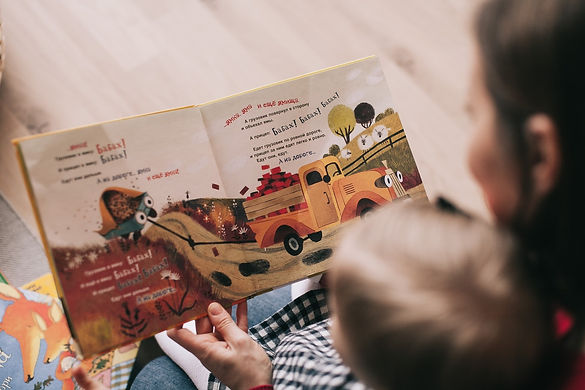
Click on "Explore Topics" for all topics and videos
or Quick Guide to topics below
Benefits of Reading to Young Children

Find the most up-to-date information to answer three Questions: “What does research say?,” “What does it look like?” and “Try this!” Also, find Connecting at Home, a resource that offers easy-to-try tips for families to help children experience book reading at home.
Research Notes
Story time is important for brain development, even for babies who do not talk yet. When you read with children, they are connecting the words you say to the pictures on the page and to the things in their world. All of those connections are brain connections!
The Take Home
-
Even before they can talk, children need to hear language to support brain development.
-
Reading and telling stories with children is a great way to expose them to a rich variety of words.
-
With language, both quantity and quality matter.
What Does Research Say?
-
Infants pick up on language earlier than we realize. In fact, research shows that babies’ brains prepare to speak months before they say their first words. In order to complete this important brain preparation, children need to hear language.
-
Books provide a great opportunity for back-and-forth interactions with older children. This supports word learning and preliteracy skills.
-
The quantity of words that children hear is important for language development, but so is the quality of language that they hear. Quality of language can refer to word diversity and to the speech signal.
-
It is important to use new and different words for children to expand their vocabulary. Books often include words that adults would not otherwise use, like names of plants or animals.
-
Research shows that babies prefer infant-directed speech, or "parentese." The slow, exaggerated sing-song voice grabs babies’ attention and helps them identify individual sounds.
What Does It Look Like?
-
Although some infants will listen to books, other infants want to turn pages and chew on corners. That’s okay! Any interaction that infants have with books is good. As they get older, the interactions will become more focused and intentional.
-
Toddlers may like to hold the book and turn the pages. They may also like to help tell the story. Pause during stories that they have heard many times and let them fill in the missing words. Or ask them to tell you the whole story.
-
Dialogic reading is a type of interactive reading. When adults ask children questions, explain new vocabulary, and relate the story to a child’s life, they are engaged in dialogic reading. This helps young children develop important preliteracy skills, like story understanding and critical thinking.
-
You can use the words and pictures in the books you read to introduce new words and ideas to children. “This is a giraffe. Giraffes have spots and long necks. They like to eat leaves. Can a giraffe be a pet? No!” These interactions are important for growing children’s vocabulary.
Try This!
-
Make reading several times a day part of your routine. Children thrive in predictable environments. Daily reading time creates the consistency and sense of stability that children need. Reading the same books over and over also allows children to predict elements of the story and learn through repetition.
-
Reflect on how you use books with children. How might you encourage parents to use books for more than stories?
-
Reading is not the only way to use books to engage with children. Use the pictures in a book to tell your own story. Or encourage children to be the storyteller!
-
Enjoy story time! Reading is a great time to interact with children. As you read together, make funny sounds or sing songs that go along with the story. During home visits, encourage parents to do the same. Adjust your interactions to match children’s age, ability, and interests. This is how children learn best.
-
Reading to babies and young children in "parentese" makes it easier for them to learn a variety of new words. "Parentese" is linked to greater language growth in later childhood.
-
Connect families to the local library or other ways to access books in your community. Bring books on home visits and model dialogic reading for families.
Connecting at Home
Reading with your child helps build language and thinking skills. Even before children can talk, story time helps build babies’ brains.
Enjoy Story Time Together
Make funny sounds or sing songs as you read or tell stories. Reading is a great time for back-and-forth interactions with your child. This is how children learn best.
Reading Daily
Pick a regular time to read to your child, like every morning or at bedtime. Routines help children thrive. They may even like to hear the same books over and over again.
Books Introduce New Words
Choose books in your home language that focus on different topics, like animals, noises, or shapes. This is a great way to expose children to a variety of words. Reading books with new words helps build your child’s vocabulary.
Create a Dialogue
Talk to your child about the pictures in the book. “See the duck? The duck is yellow! What else in this picture is yellow?” Storytelling can go beyond the words on the page. This helps children build language and thinking skills.
Head Start and Early Head Start programs promote children's development through services that support early learning, health, and family well-being.
